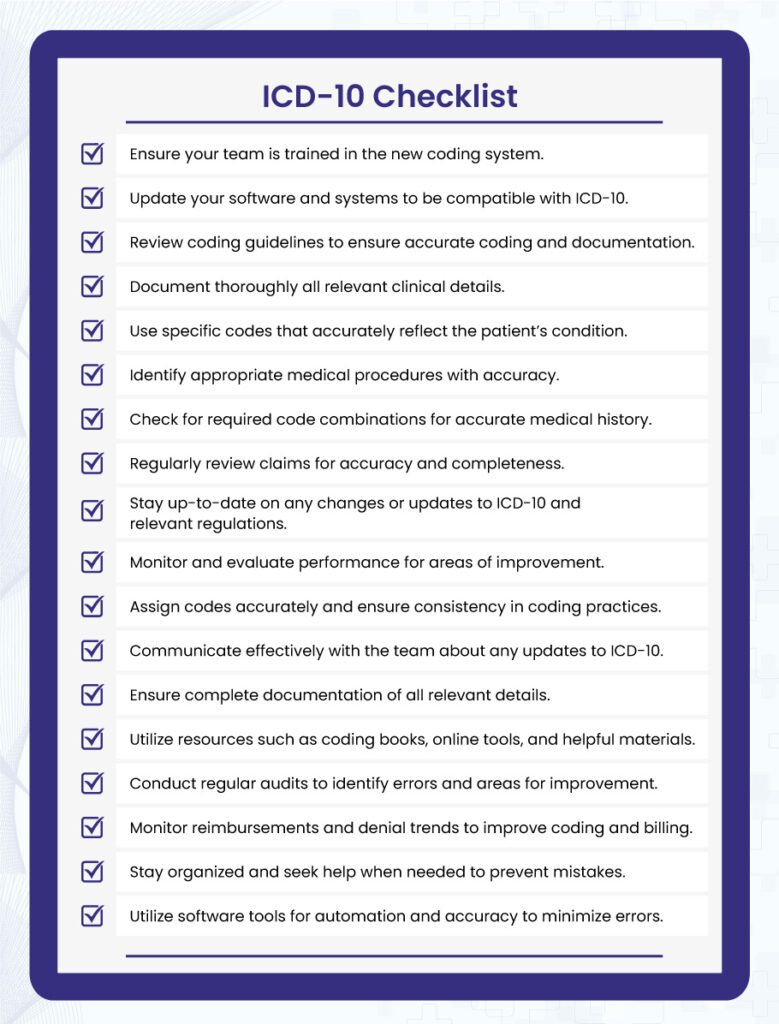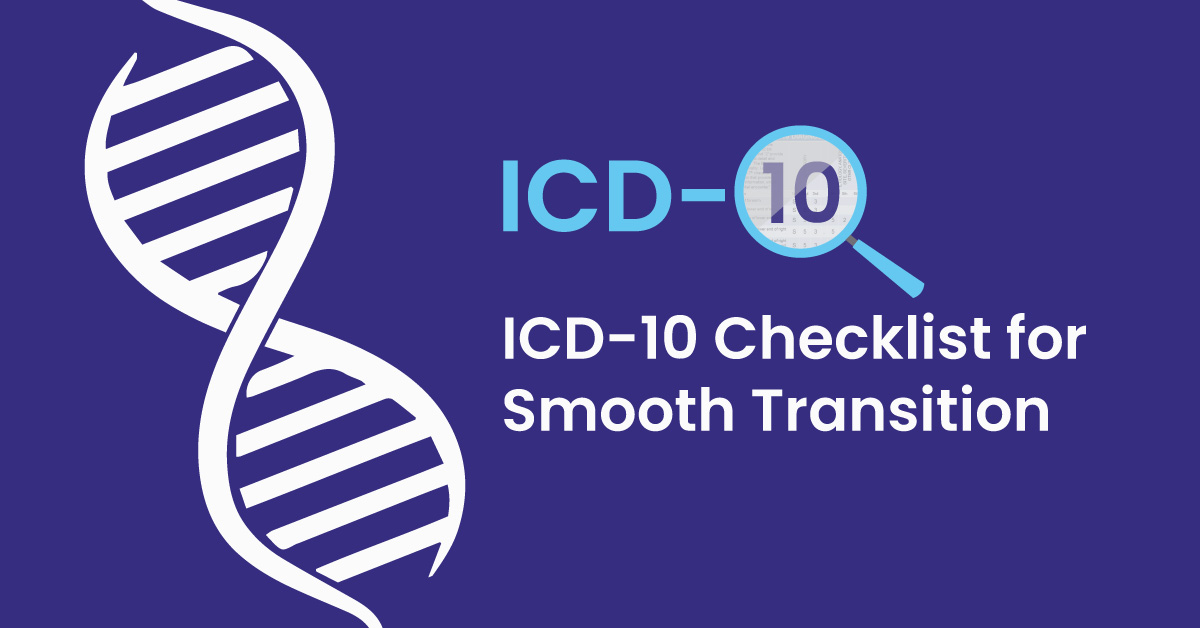ICD-10 is a medical classification system used for coding diagnoses and procedures. It stands for the International Statistical Classification of Diseases and Related Health Problems, 10th Revision, and is maintained by the World Health Organization (WHO).
ICD-10 contains codes representing medical conditions, diseases, injuries, and related healthcare procedures. The system provides a standard language for communication among healthcare providers, payers, and government agencies.
ICD-10 is used globally to collect, analyze, and report healthcare data. It is also used for reimbursement, as payers use the codes to determine the appropriate payment for healthcare services. ICD-10 is an essential medical billing, epidemiology, research, and clinical decision-making tool.
To achieve a successful transition to ICD-10, follow this checklist:

- Ensure your team is trained in the new coding system.
- Update your software and systems to be compatible with ICD-10.
- Review coding guidelines to ensure accurate coding and documentation.
- Document thoroughly all relevant clinical details.
- Use specific codes that accurately reflect the patient’s condition.
- Identify appropriate medical procedures with accuracy.
- Check for required code combinations for accurate medical history.
- Regularly review claims for accuracy and completeness.
- Stay up-to-date on any changes or updates to ICD-10 and relevant regulations.
- Monitor and evaluate performance for areas of improvement.
- Assign codes accurately and ensure consistency in coding practices.
- Communicate effectively with the team about any updates to ICD-10.
- Ensure complete documentation of all relevant details.
- Utilize resources such as coding books, online tools, and helpful materials.
- Conduct regular audits to identify errors and areas for improvement.
- Monitor reimbursements and denial trends to improve coding and billing.
- Stay organized and seek help when needed to prevent mistakes.
- Utilize software tools for automation and accuracy to minimize errors.
If you are looking to transition to ICD-10, utilizing this checklist and the available resources can be helpful to ensure a smooth transition. By following these essential steps and incorporating best practices, you can improve the accuracy of your coding and billing processes, ultimately leading to better patient care and improved financial outcomes for your organization.
In addition to the checklist, consulting with experts, such as certified medical coders, compliance officers, or healthcare consultants, may be helpful. They can provide valuable insights and advice to help you navigate the complexities of ICD-10 and address any challenges that may arise during the transition process. Utilizing these resources can help ensure that your organization is fully prepared for ICD-10 implementation and can achieve long-term medical coding and billing success.




